James Hong
Learning Subject-Aware Cropping by Outpainting Professional Photos
Dec 19, 2023



Abstract:How to frame (or crop) a photo often depends on the image subject and its context; e.g., a human portrait. Recent works have defined the subject-aware image cropping task as a nuanced and practical version of image cropping. We propose a weakly-supervised approach (GenCrop) to learn what makes a high-quality, subject-aware crop from professional stock images. Unlike supervised prior work, GenCrop requires no new manual annotations beyond the existing stock image collection. The key challenge in learning from this data, however, is that the images are already cropped and we do not know what regions were removed. Our insight is combine a library of stock images with a modern, pre-trained text-to-image diffusion model. The stock image collection provides diversity and its images serve as pseudo-labels for a good crop, while the text-image diffusion model is used to out-paint (i.e., outward inpainting) realistic uncropped images. Using this procedure, we are able to automatically generate a large dataset of cropped-uncropped training pairs to train a cropping model. Despite being weakly-supervised, GenCrop is competitive with state-of-the-art supervised methods and significantly better than comparable weakly-supervised baselines on quantitative and qualitative evaluation metrics.
Spotting Temporally Precise, Fine-Grained Events in Video
Jul 20, 2022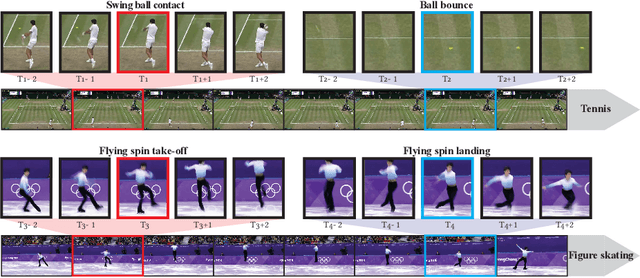


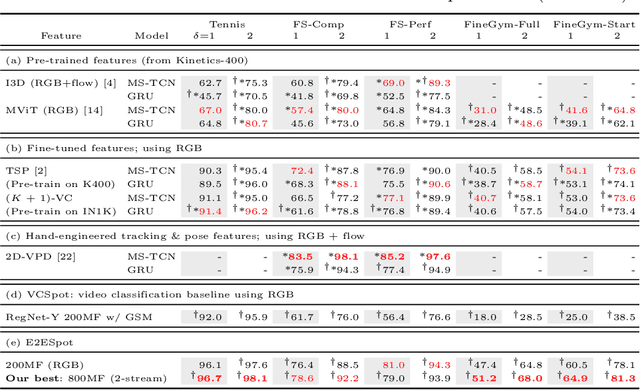
Abstract:We introduce the task of spotting temporally precise, fine-grained events in video (detecting the precise moment in time events occur). Precise spotting requires models to reason globally about the full-time scale of actions and locally to identify subtle frame-to-frame appearance and motion differences that identify events during these actions. Surprisingly, we find that top performing solutions to prior video understanding tasks such as action detection and segmentation do not simultaneously meet both requirements. In response, we propose E2E-Spot, a compact, end-to-end model that performs well on the precise spotting task and can be trained quickly on a single GPU. We demonstrate that E2E-Spot significantly outperforms recent baselines adapted from the video action detection, segmentation, and spotting literature to the precise spotting task. Finally, we contribute new annotations and splits to several fine-grained sports action datasets to make these datasets suitable for future work on precise spotting.
Video Pose Distillation for Few-Shot, Fine-Grained Sports Action Recognition
Sep 03, 2021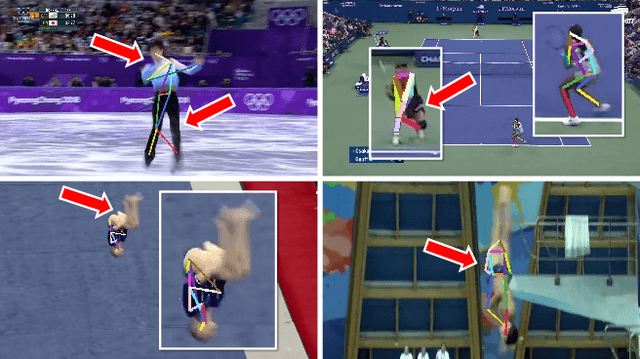
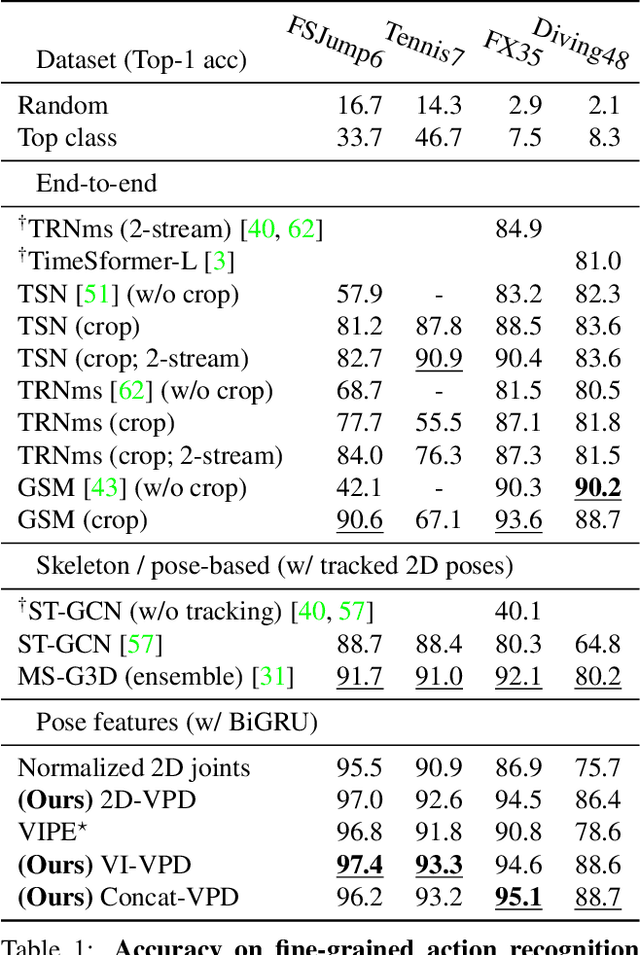

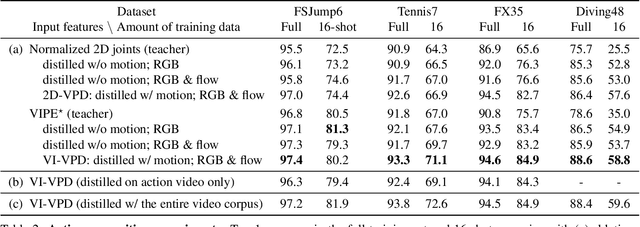
Abstract:Human pose is a useful feature for fine-grained sports action understanding. However, pose estimators are often unreliable when run on sports video due to domain shift and factors such as motion blur and occlusions. This leads to poor accuracy when downstream tasks, such as action recognition, depend on pose. End-to-end learning circumvents pose, but requires more labels to generalize. We introduce Video Pose Distillation (VPD), a weakly-supervised technique to learn features for new video domains, such as individual sports that challenge pose estimation. Under VPD, a student network learns to extract robust pose features from RGB frames in the sports video, such that, whenever pose is considered reliable, the features match the output of a pretrained teacher pose detector. Our strategy retains the best of both pose and end-to-end worlds, exploiting the rich visual patterns in raw video frames, while learning features that agree with the athletes' pose and motion in the target video domain to avoid over-fitting to patterns unrelated to athletes' motion. VPD features improve performance on few-shot, fine-grained action recognition, retrieval, and detection tasks in four real-world sports video datasets, without requiring additional ground-truth pose annotations.
Rekall: Specifying Video Events using Compositions of Spatiotemporal Labels
Oct 07, 2019



Abstract:Many real-world video analysis applications require the ability to identify domain-specific events in video, such as interviews and commercials in TV news broadcasts, or action sequences in film. Unfortunately, pre-trained models to detect all the events of interest in video may not exist, and training new models from scratch can be costly and labor-intensive. In this paper, we explore the utility of specifying new events in video in a more traditional manner: by writing queries that compose outputs of existing, pre-trained models. To write these queries, we have developed Rekall, a library that exposes a data model and programming model for compositional video event specification. Rekall represents video annotations from different sources (object detectors, transcripts, etc.) as spatiotemporal labels associated with continuous volumes of spacetime in a video, and provides operators for composing labels into queries that model new video events. We demonstrate the use of Rekall in analyzing video from cable TV news broadcasts, films, static-camera vehicular video streams, and commercial autonomous vehicle logs. In these efforts, domain experts were able to quickly (in a few hours to a day) author queries that enabled the accurate detection of new events (on par with, and in some cases much more accurate than, learned approaches) and to rapidly retrieve video clips for human-in-the-loop tasks such as video content curation and training data curation. Finally, in a user study, novice users of Rekall were able to author queries to retrieve new events in video given just one hour of query development time.
 Add to Chrome
Add to Chrome Add to Firefox
Add to Firefox Add to Edge
Add to Edge